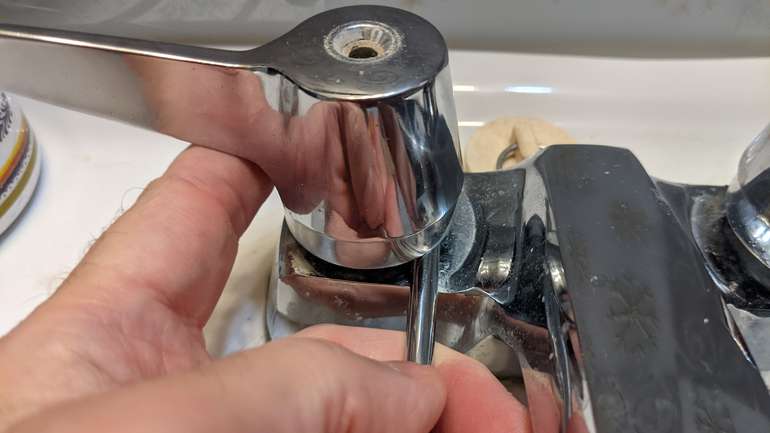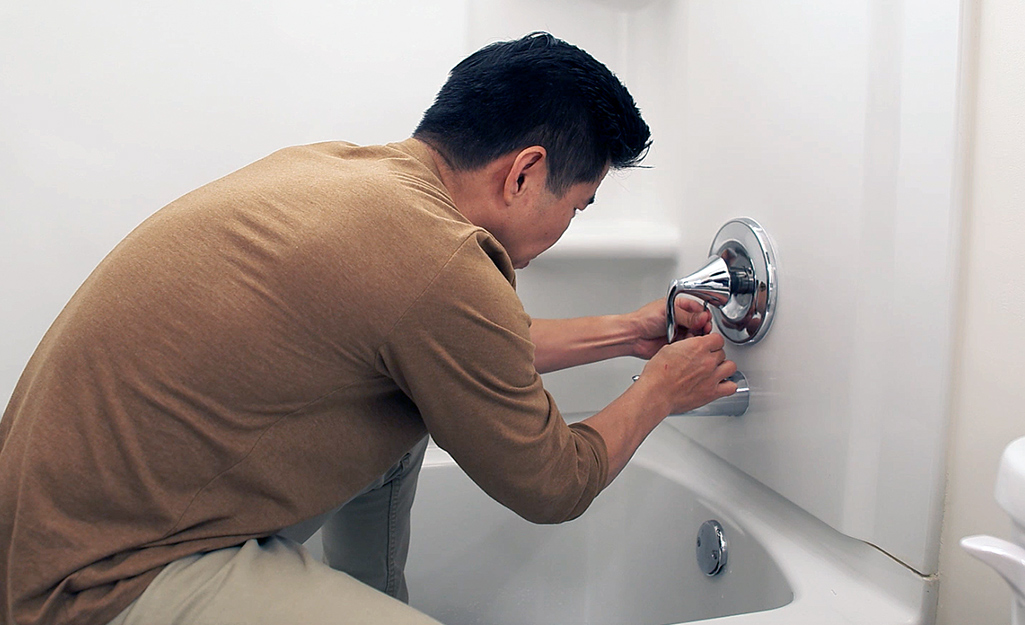Your Merits of Correcting a Leaking Faucet
Your Merits of Correcting a Leaking Faucet
Blog Article
How do you actually feel with regards to 4 Common Reasons for a Leaky Faucet?

Leaking taps might look like a small inconvenience, however their influence goes beyond just the nuisance of the audio. From wasting water to incurring unnecessary monetary prices and wellness risks, disregarding a leaking faucet can result in different repercussions. In this post, we'll explore why it's critical to resolve this usual house concern without delay and properly.
Waste of Water
Environmental Impact
Trickling faucets contribute significantly to water wastefulness. According to the Environmental Protection Agency (EPA), a solitary tap dripping at one drip per second can lose greater than 3,000 gallons of water each year. This not just strains water resources however likewise impacts environments and wildlife dependent on them.
Step-by-Step Guide to Dealing With a Dripping Faucet
Devices Required
Before attempting to repair a trickling faucet, collect the needed devices, including a flexible wrench, screwdrivers, substitute components (such as washers or cartridges), and plumber's tape.
Typical Tap Issues and Their Solutions
Recognize the sort of tap and the details problem triggering the drip. Common troubles include worn-out washing machines, corroded shutoff seats, or damaged O-rings. Describe maker instructions or on-line tutorials for step-by-step advice on repair services.
Financial Costs
Boosted Water Bills
Beyond the ecological impact, leaking taps can inflate water expenses significantly. The gathered wastage in time equates right into greater utility expenses, which might have been prevented with prompt fixings.
Potential Property Damage
Moreover, prolonged trickling can cause damage to components and surfaces bordering the faucet. Water buildup can cause discoloration, corrosion, and also structural problems if left unattended, leading to additional repair service prices.
Health and wellness Problems
Mold and Mildew Development
The consistent presence of wetness from a trickling faucet creates a suitable environment for mold and mildew development. These fungis not only compromise indoor air high quality however likewise present wellness threats, particularly for individuals with respiratory conditions or allergies.
Waterborne Illness
Stagnant water in dripping faucets can end up being a breeding ground for bacteria and other pathogens, raising the threat of waterborne illness. Pollutants such as Legionella bacteria thrive in stationary water, possibly resulting in major illnesses when consumed or inhaled.
DIY vs. Professional Fixing
Pros and Cons of Do It Yourself Repair Work
While some might attempt to repair a trickling tap themselves, do it yourself fixings feature their own set of difficulties. Without appropriate expertise and devices, DIY attempts can aggravate the problem or bring about insufficient repairs, lengthening the problem.
Advantages of Hiring a Specialist Plumber
Hiring an expert plumber ensures that the underlying root cause of the dripping faucet is resolved efficiently. Plumbing professionals have the experience and tools to detect and fix tap issues successfully, saving time and minimizing the threat of more damages.
Ecological Duty
Specific Payment to Preservation
Taking duty for repairing leaking faucets lines up with more comprehensive initiatives towards water conservation and ecological sustainability. Every person's activities collectively make a considerable effect on maintaining valuable resources.
Sustainable Living Practices
By focusing on timely repair work and taking on water-saving routines, individuals add to lasting living methods that profit both present and future generations.
Safety nets
Routine Upkeep Tips
To avoid trickling faucets, execute routine upkeep such as cleaning aerators, checking for leakages, and replacing damaged parts quickly. In addition, think about mounting water-saving tools or upgrading to a lot more reliable fixtures.
Significance of Prompt Fixes
Addressing dripping faucets as quickly as they're seen protects against further water wastage and prospective damage, eventually saving both water and cash in the future.
Impact on Residential Property Worth
Assumption of Well-Maintained Building
Keeping a property in good condition, including resolving upkeep problems like leaking faucets, boosts its viewed value and desirability among possible purchasers or occupants.
Impact on Resale Value
Residences with well-maintained plumbing fixtures, including taps, command higher resale worths in the real estate market. Dealing with trickling faucets can add to a positive impression during home inspections and arrangements.
Conclusion
Attending to a dripping faucet surpasses mere benefit; it's an important action towards conserving water, minimizing economic costs, and protecting health and wellness and property. Whether through DIY repair services or specialist aid, taking action to repair leaking faucets is a little yet impactful method to promote liable stewardship of sources and add to a much healthier, a lot more lasting future.
How to Fix a Dripping or Leaky Faucet
A leaking faucet is one of the most common problems that homeowners encounter, but it being commonplace doesn’t make it any less annoying. The constant drip drip drip of a leaking bathtub faucet, showerhead, or sink tap can disturb your home’s serenity. Left neglected, a dripping faucet can also result in higher water bills and discoloration or mold growth in your sink or plumbing fixtures.
Fortunately, you don’t have to be a trained plumber to know how to stop a dripping faucet. With some basic tools, replacement parts, and a little patience, leaky faucet repair is a breeze. In this article, we’ll explain what causes dripping faucets and how you can fix them.
What Causes a Leaking Faucet?
Kitchen and bathroom faucets come in all manner of designs, but most involve some combination of valves, O-rings, seals, and washers. The O-ring is usually the weakest link, but any one of these pieces can wear down over time. Heat, moisture, temperature fluctuations, minerals, mold, and movement can contribute to warping and corrosion, breaking the watertight seal. This just comes with the territory of being a homeowner. Everything is always subject to wear and tear, and some component parts of your appliances and fixtures need to be replaced on occasion. At least replacement O-rings are cheap!
More rarely, dripping faucets can be a symptom of excessively high water pressure. Were this the case in your home, you would probably notice that the leak is not isolated to one faucet. Water pressure issues are harder to resolve on your own. We recommend contacting a professional plumber if you suspect your water pressure is too high.
How to Fix a Dripping Faucet
Pipe wrench or monkey wrench Allen wrench set Screwdrivers Old towel or rag Shut off the water.
Before you do anything, you need to turn off the water to keep from drenching your kitchen or bathroom. You should find a valve under the sink and against the wall. Once you’ve turned this valve, try turning the faucet on to confirm that the water source has been cut off.
If you can’t locate your local valve for the faucet you’re working on, you can always shut off the water to the house at the main valve. Of course, this will prohibit anyone from using the sinks, showers, or toilets while you’re working on the faucet that’s giving you trouble.
Plug or block the drain.
You’ll be disassembling the faucet and removing some small bits of hardware. Plug the drain with a stopper or rag to avoid the possibility of a small screw falling into your P-trap.
Take apart the faucet assembly.
There are several varieties of kitchen and bathroom faucets, each with its own manner of assembly. For detailed instructions on how to disassemble your faucet, you can refer to the fixture’s manual or contact the manufacturer. If you know whether you have a ball, disc, cartridge, or compression faucet, you can find detailed schematics online.
In general, you need to begin by removing the faucet handles. You might notice a small screw that you’ll need to remove with a screwdriver or Allen wrench. If you don’t see any visible securing hardware, it’s likely hidden under a decorative cap that can be unscrewed or popped off with flathead screwdriver.
Remove each piece methodically, consulting a schematic when necessary. Take notes or arrange the pieces in such a way to make it easier to correctly reassemble the faucet later.
Remove the cartridge.
Once you’ve removed the handles and securing hardware, you should be able to remove the valve cartridge or stem. Some cartridges will slide right out. Other faucet models will require you to loosen a nut with a pipe wrench before you can remove the valve stem.
Examine the exposed hardware.
With the cartridge or stem removed, inspect the component parts. Check the rubber O-rings for wear and tear. Also examine the seat washer for corrosion or other damage. These pieces are usually the responsible parties for a dripping faucet, but it’s worth inspecting the other component parts while you have the faucet disassembled.
Find replacement parts.
Once you’ve identified which faucet component has failed, find an identical replacement. Your local hardware store should have O-rings, seat washers, and other standard components in stock. If you have a luxury or uncommon faucet, you may have to contact the manufacturer for a replacement part.
It’s a good idea to take your old parts with you to the hardware store so you can compare them with the store’s inventory and be sure you’re purchasing the correct replacement.
Reassemble the faucet.
With your new parts in hand, reconstruct the faucet and handles. Don’t be tempted to overtighten screws or nuts. You might think this could create a better seal, but it can instead damage or bend a delicate part of the assembly and create a new problem for you.
Turn on the water and test the faucet.
The only thing left to do is test your work. Unplug the sink, turn the water back on, and try the faucet. Congratulate yourself on a job well done!
https://www.libertyhomeguard.com/how-to-fix-a-dripping-or-leaky-faucet/

As a devoted reader about Should I Repair or Replace a Leaky Faucet?, I was thinking sharing that post was worthwhile. You should pause to distribute this blog posting if you appreciated it. I value reading our article about Why Are My Faucets Dripping (And Can I Fix It Myself)?.
Report this page